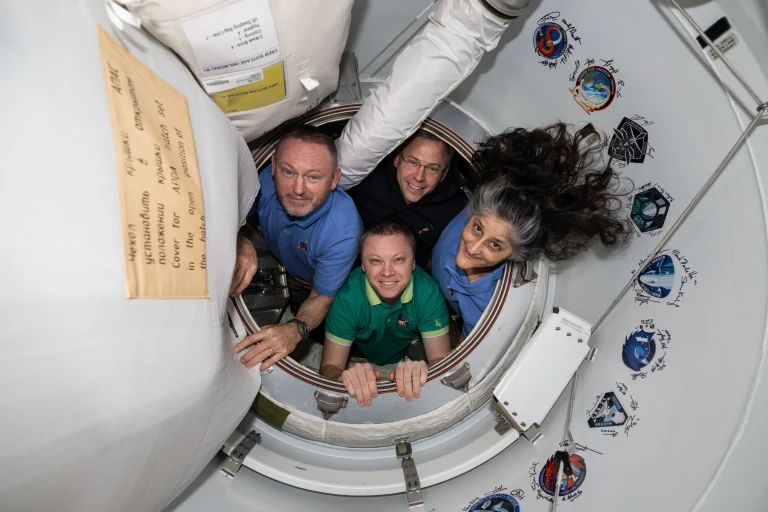During the morning of March 20, 2015, a total solar eclipse was visible from parts of Europe, and a partial solar eclipse from northern Africa and northern Asia. NASA’s Terra satellite passed over the Arctic Ocean on March 20 at 10:45 UTC (6:45 a.m. EDT) and captured the eclipse’s shadow over the clouds in the Arctic Ocean.
Terra launched 25 years ago on Dec. 18, 1999. Approximately the size of a small school bus, the Terra satellite carries five instruments that take coincident measurements of the Earth system: Advanced Spaceborne Thermal Emission and Reflection Radiometer (ASTER), Clouds and Earth’s Radiant Energy System (CERES), Multi-angle Imaging Spectroradiometer (MISR), Measurements of Pollution in the Troposphere (MOPITT), and Moderate Resolution Imaging Spectroradiometer (MODIS).
On Nov. 28, 2024, one of Terra’s power-transmitting shunt units failed. A response team reviewed Terra’s status and discussed potential impacts and options. Consequently, the team placed ASTER into Safe Mode. As a result, ASTER data are not currently being collected. All other instruments continue uninterrupted.
Image Credit: NASA Goddard MODIS Rapid Response Team
2015年3月20日上午,一次日全食在欧洲部分地区可见,非洲北部和亚洲北部则可见到日偏食。NASA的泰拉(Terra)卫星于3月20日10:45 UTC(美国东部夏令时上午6:45)飞越北冰洋,并拍摄到了日食投下的阴影在北冰洋云层上的景象。
泰拉卫星于1999年12月18日发射,至今已有25年历史。这颗卫星的大小相当于一辆小型校车,携带了五种仪器,用于对地球系统进行同步测量:高级星载热发射与反射辐射计(ASTER)、云和地球辐射能量系统(CERES)、多角度成像光谱辐射计(MISR)、对流层污染测量仪(MOPITT)、中分辨率成像光谱仪(MODIS)。
2024年11月28日,泰拉卫星的一台电力传输分流单元发生故障。响应团队评估了泰拉的状态,并讨论了潜在影响和可选方案。随后,团队将ASTER仪器置于安全模式。因此,目前ASTER的数据已停止收集,但其他仪器仍然正常运行。
影像来源: NASA Goddard MODIS Rapid Response Team







